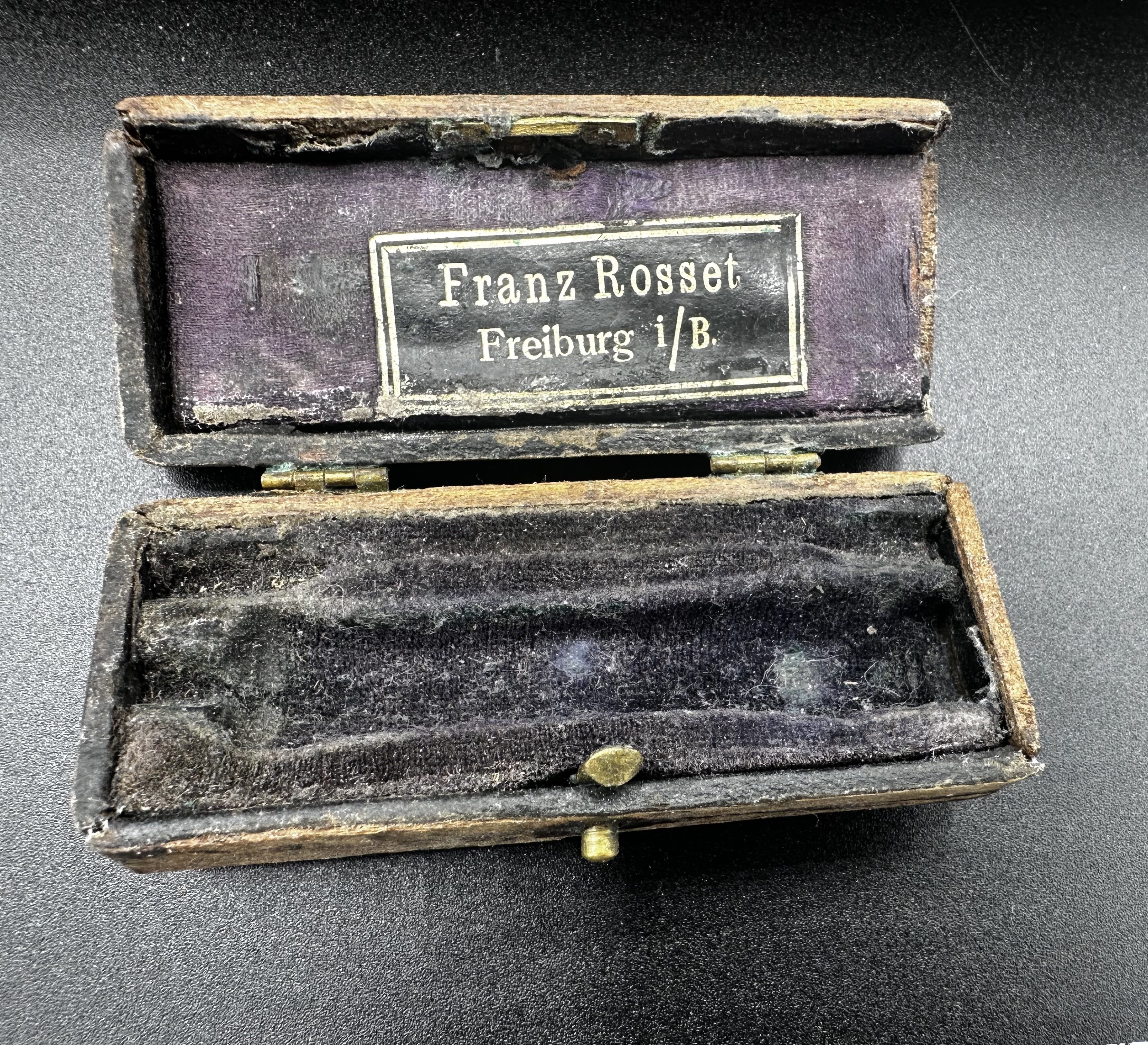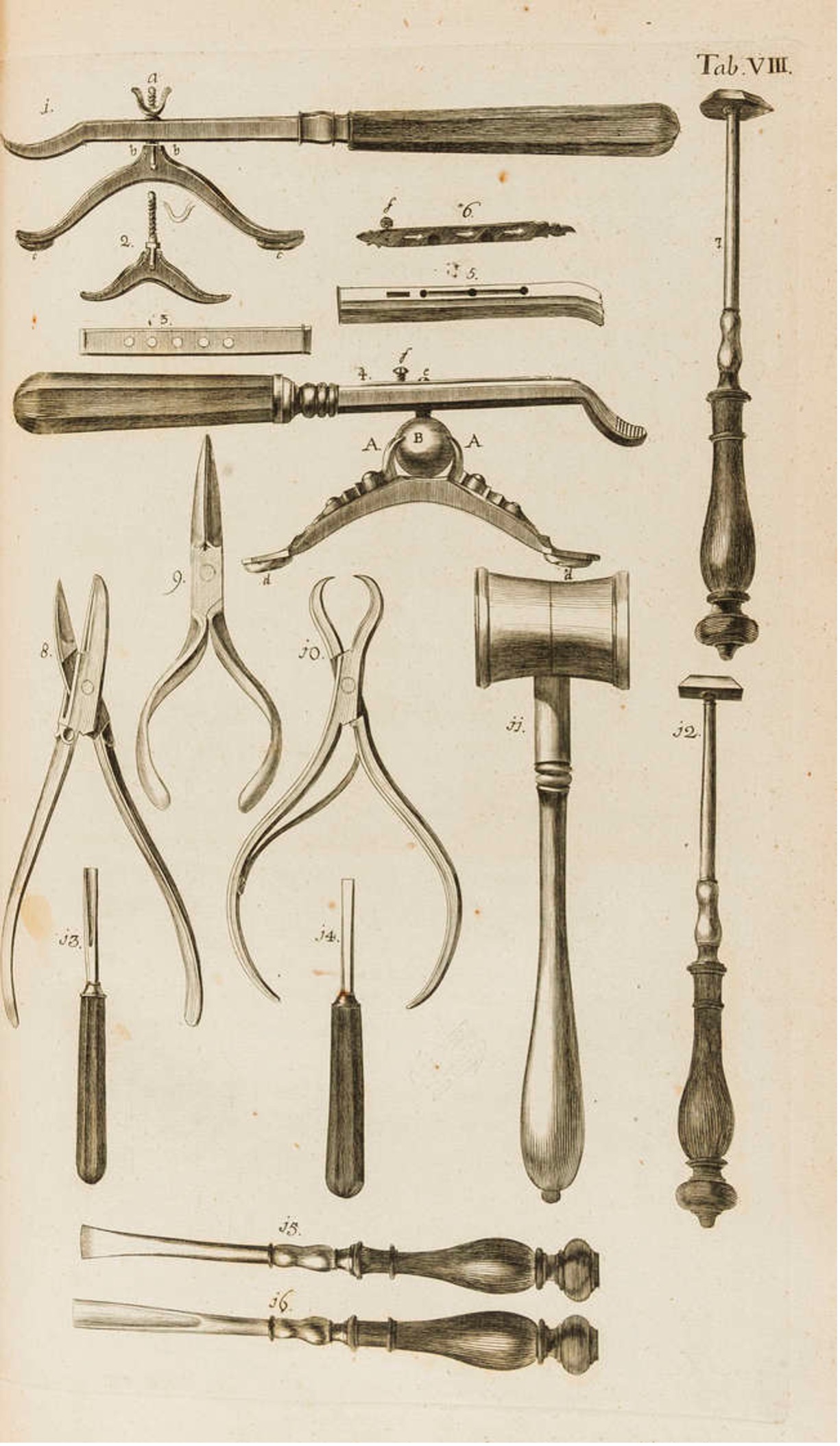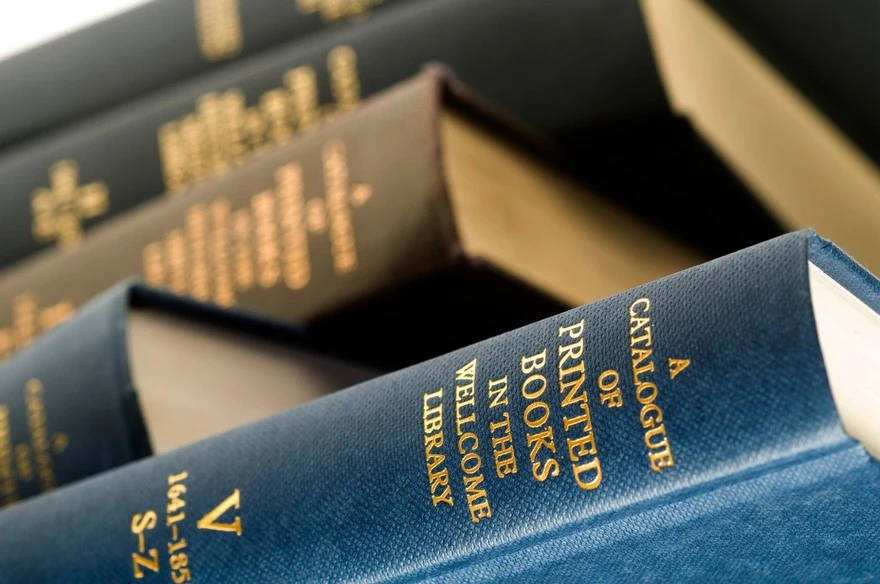A wonderful transformation of the Ugly Duckling
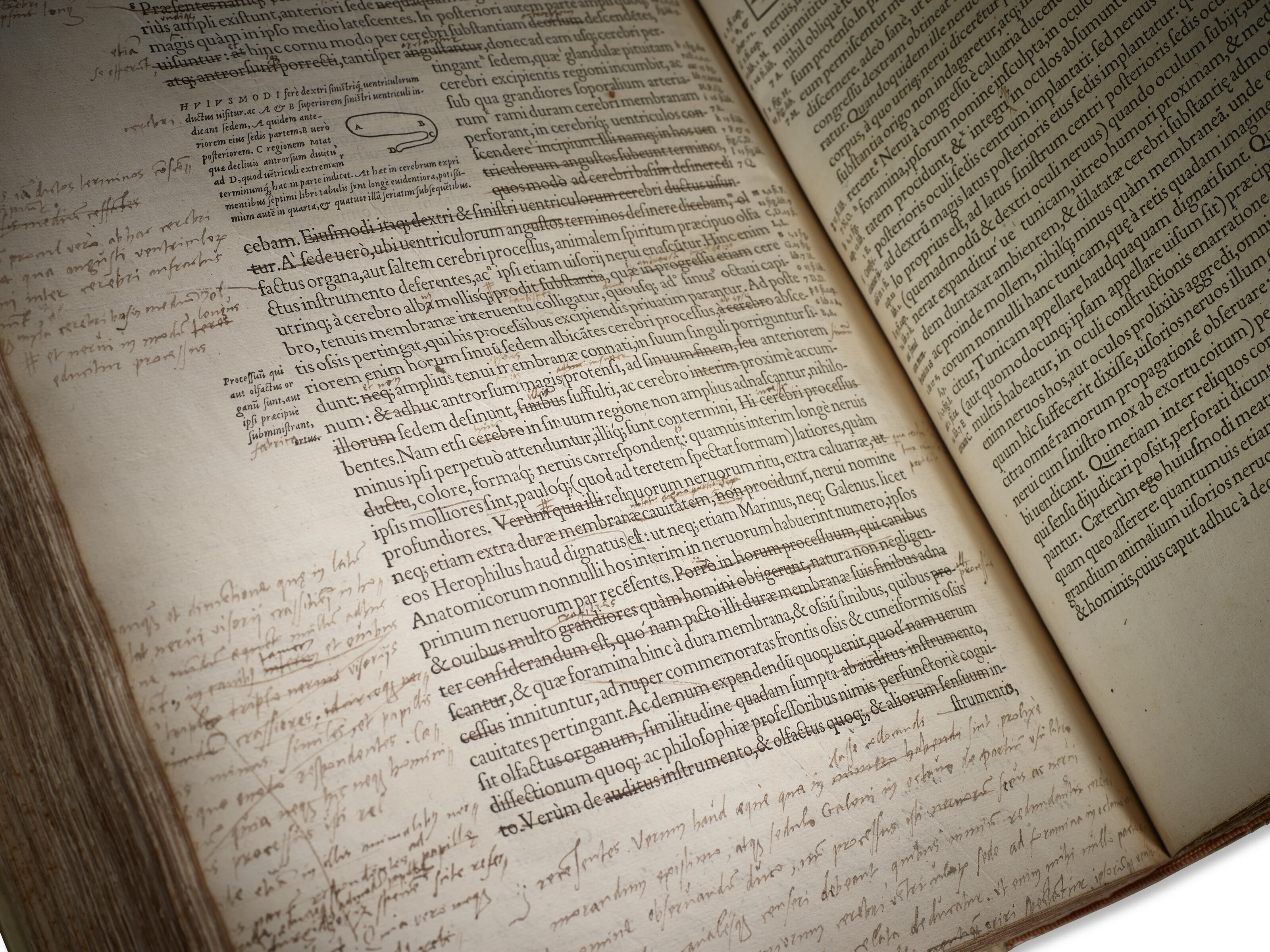
The story of how the second edition of the book De humani corporis fabrica libri septem, by Flemish Andreas Vesalius (1514–1564), desecrated by numerous marginal notes, became one of the most outstanding examples of scientific printing that has come down to us has shocked the world of medical history and bibliography. This book, first published in 1543, then revolutionised anatomy, laying the foundations and standards for anatomical research for the next several hundred years. In a luxurious folio-sized book, the author not only provided a detailed description of the structure of the human body, illustrated with magnificent woodcuts of Musclemen – dissected corpses in elaborate poses, with layers of muscles gradually removed, revealing the depths of the inner world of the human body, but also commented on about 200 mistakes and misconceptions of the infallible authority, Claudius Galenus, questioning more than a thousand years of anatomical beliefs. It is no wonder that the young genius — Andreas Vesalius was only 29 years old when he published his Opus Magnum — faced not just significant opposition, but fierce hatred. He unleashed a torrent of criticism and caused a real ruckus by challenging established views and shaking the comfortable foundations of professorial authority.
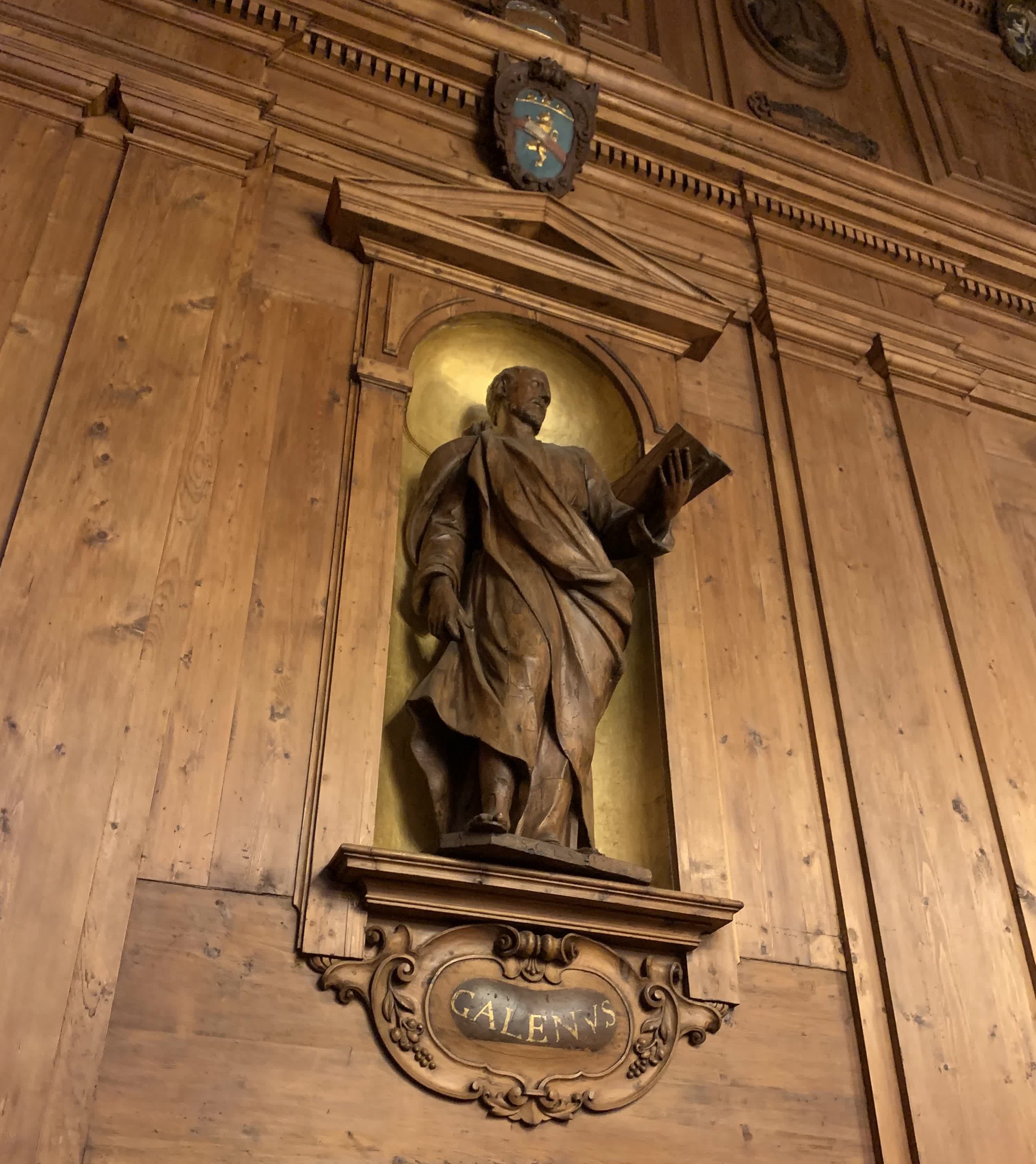
The wooden statue of Claudius Galenus reading his anatomy book. Teatro Anatomico, Palazzo dell’Archiginnasio, University Bologna, Italy
In 1555, the scientist published a second edition, expanded and revised. In total, about 150 of its copies have survived to this day, and they are not only kept in museums around the world, but also periodically come up at auctions. So, in 2007, one such copy with the description 'Mod. vellum. - Lacking the pp. 669-672 and the whole index … lightly soiled, here and there contemp. marginalia and underlinings' was put up for auction by the respectable German auction house Keterrer and sold for €13,200 to Gerard Vogrincic, a retired Canadian doctor and avid collector. Antiquarians and book collectors usually avoid books with annotations, considering them desecrated, less valuable, but the price was comparatively not so high (the same auction house a year later sold a similar copy of the second edition of 'In general very fine copy' for 30 thousand euros).
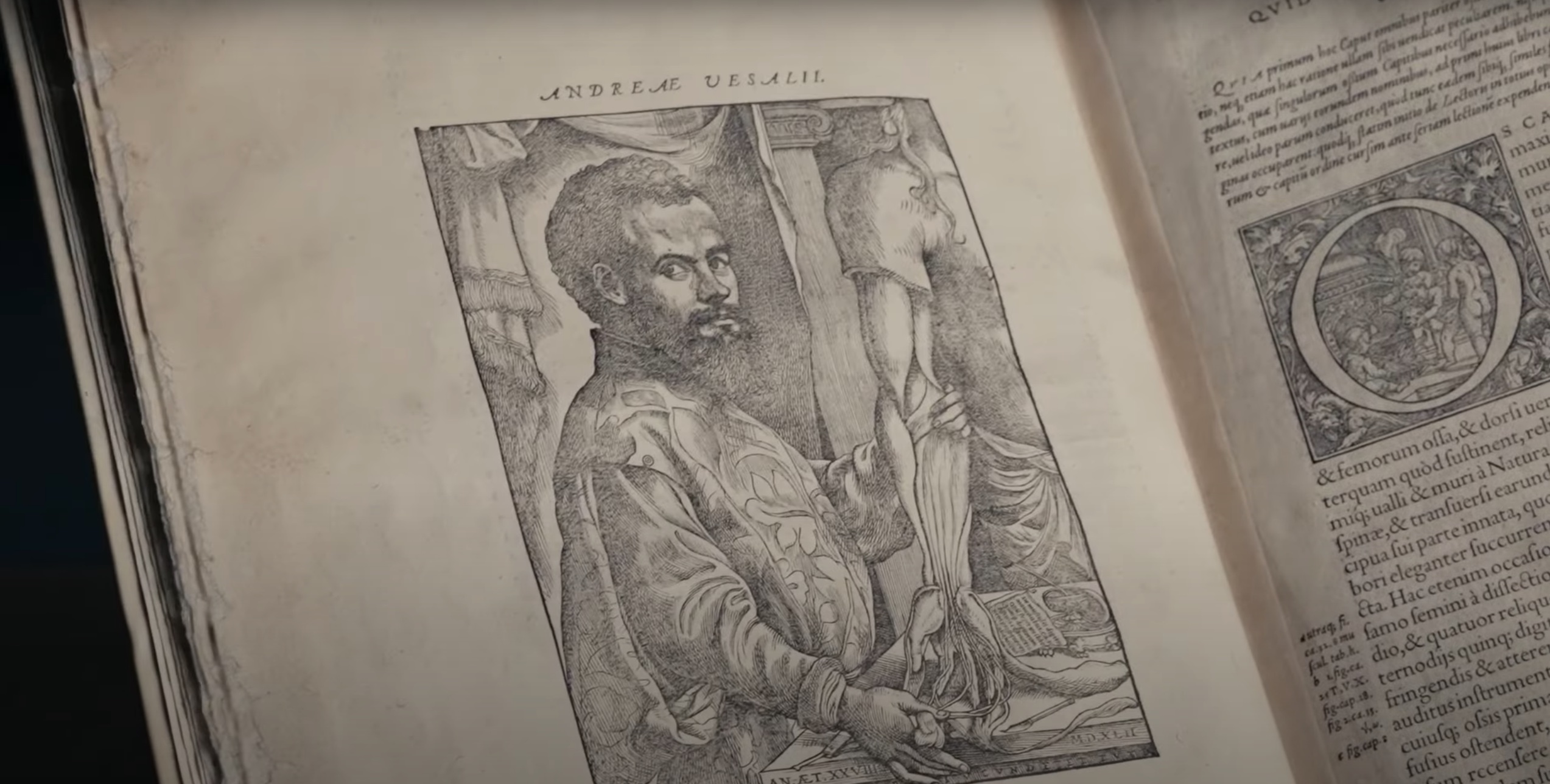
Andreas Vesalius, the only portrait approved by the author. Credit: Christie's
Dr. Gerard Vogrincic, the discoverer of the book, drew attention to their strange feature of the 'marginalia' – the notes were not so much scattered comments and thoughts of the reader as an attempt to correct, improve the existing version of the text, and rewrite it. Who could have written these uncommon notes? Could it be possible that this is Andreas Vesalius's personal copy, filled with his extensive notes and additions intended for the never-published third edition?
Enlightened by the insight, he began to look for ways to test it. However, much fewer handwritten samples of the brilliant scientist have survived to this day than copies of his printed works – less than a ten of his letters have survived. Dr. Vogrincic managed to get copies of two of them, and what was his delight when the handwriting of the notes coincided with the samples of the anatomist’s confirmed autographs! These actually turned out to be Vesalius' own notes, and instead of a soiled second edition, the book instantly turned into one of the most important medical works in the entire history of mankind! This discovery allows to look into the mind of one of the most important physicians in history, and understand what other changes were planned to be made in the future third edition.
Unsurprisingly, when auctioned by Christie's auction in January 2024, the book broke numerous records with a selling price of $2.228 million, making it one of the ten most expensive scientific titles ever sold. Among other things, it exceeded the $1,652,500 paid at Christie's auction in 1998 for the first edition, personally dedicated by Vesalius to the Holy Roman Emperor Charles V – this copy of 1543 is easy to distinguish from others as the only known color (hand-painted) edition.
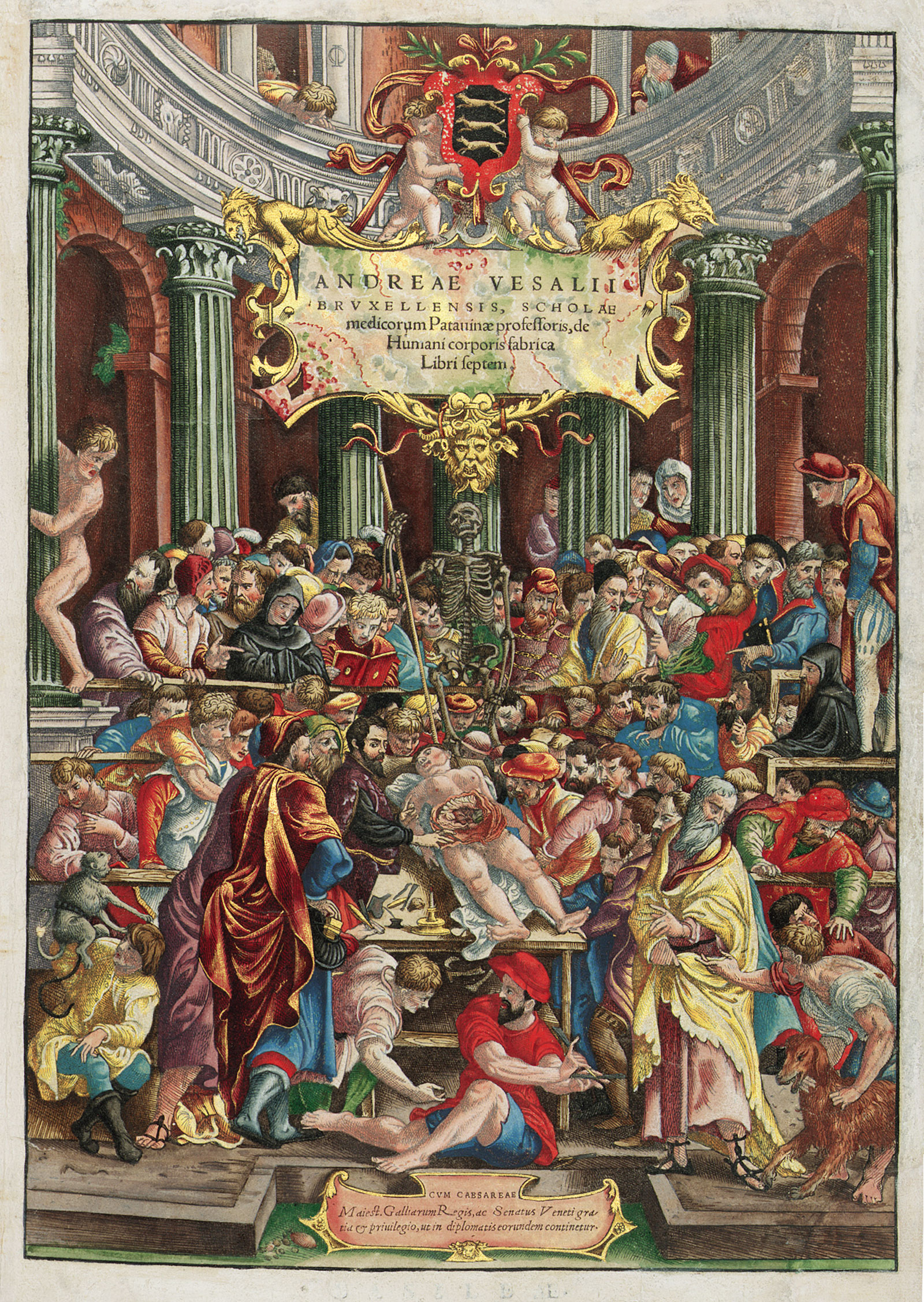
Hand-colored woodcut Andreas Vesalius (1514-1564) from the 'De humani corporis fabrica libri septem'. Dedication copy presented by Vesalius to Charles V (1500-1558), Holy Roman Emperor, 1543. Source: commons.wikimedia.org. Courtesy of an Anonymous Private Collector; photo courtesy of Christie's, New York
Christie's revealed that the Department of Culture, Flemish Community, acquired Andreas Vesalius' personally annotated edition of 'De humani corporis fabrica', in partnership with KU Leuven. This significant piece will be exhibited at KU Leuven, the most ancient university in the Low Countries. Born in Brussels in 1514 as Andries van Wesel, the genial anatomist latinized his name as Andreas Vesalius. Initially attending the University of Leuven, the return of Vesalius' landmark publication to this institution marks a symbolic homecoming.

The second edition of the book De humani corporis fabrica libri septem (1555), by Flemish Andreas Vesalius. Credit: Christie's
Additional reading:
"Bookfind of the century" sells for $2.23 million

